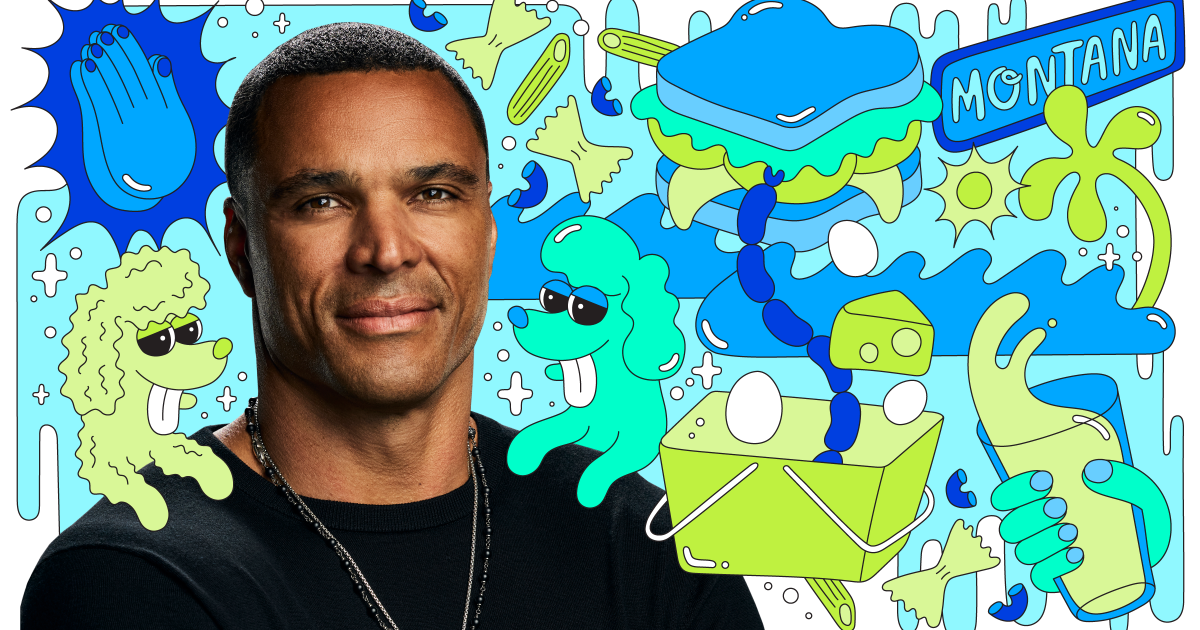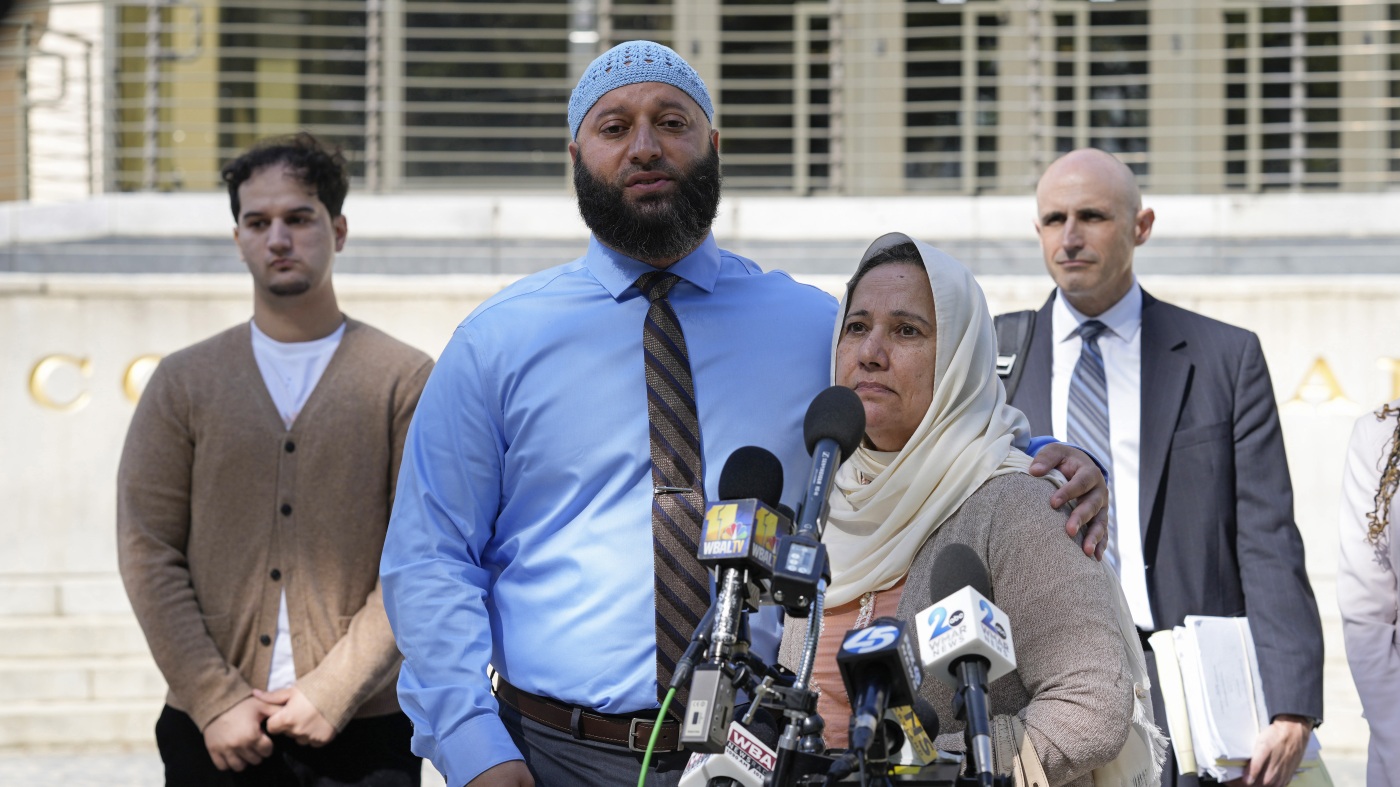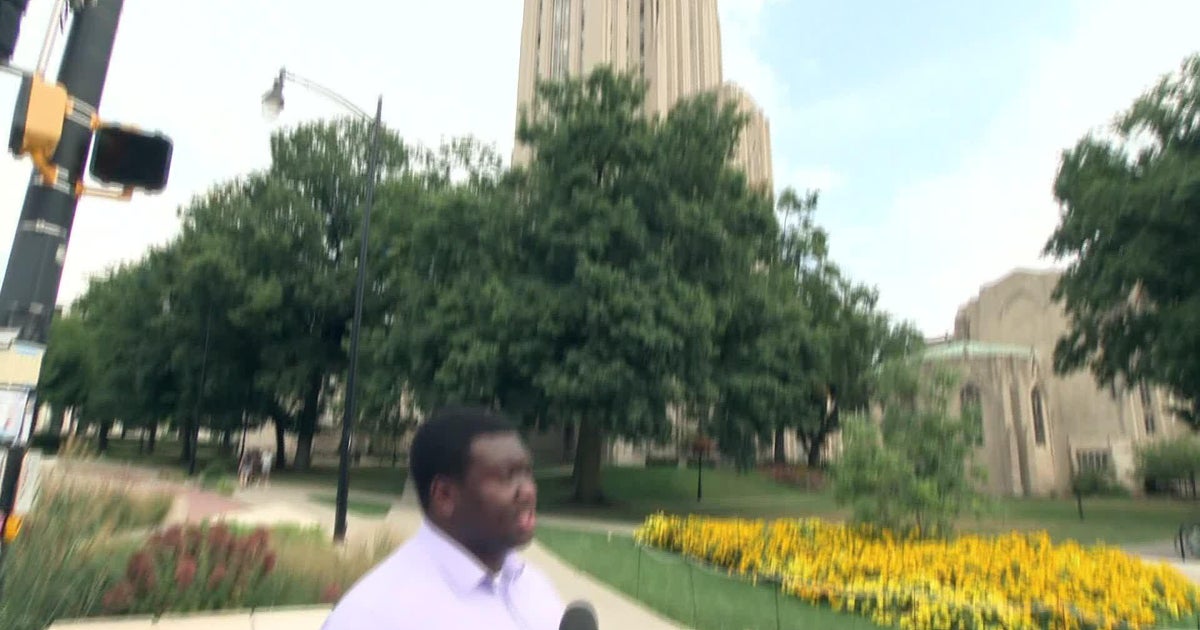Lifestyle
'James' revisits Huck Finn's traveling companion, giving rise to a new classic

An enslaved man debates John Locke. A Black man pretends to be a white man in blackface to sing in a new minstrel show. In a fever dream of a retelling, the new reigning king of satire, Percival Everett, has turned one of America’s best loved classics, Adventures of Huckleberry Finn, upside down, placing Huck’s enslaved companion Jim at the center and making him the narrator. The result is strangely new and familiar – an adrenaline-spiking adventure with absurdity and tragedy blended together.

Re-imaginings of classic literature are challenging, often unnecessary endeavors. This one is different, a startling homage and a new classic in its own right. Readers may be surprised by how much of the original scaffolding remains and how well the turnabout works, swapping a young man’s moral awakening for something even more fraught. A kind of historical heist novel about human cargo, as in the original, James is an enslaved man in antebellum Missouri. James loves his wife Sadie and their 9-year old daughter Lizzie, and keeps them safe by not just adhering to – but mastering – the racial codes of an inhumane system.

Despite those efforts, one day Jim learns the unthinkable — the mistress is planning to sell him down the river but keep Sadie and Lizzie. James can’t have his family separated, so he runs to nearby Jackson Island, planning to hide out until he can figure a way to secure their freedom. Jim’s unlikely friend, young Huckleberry Finn also has reason to hide and to run with his abusive and alcoholic father back in town. After faking his own death (an action that unintentionally puts James under suspicion), Huck begs to come along, offering to pretend to be Jim’s owner. This alliance launches a delirious odyssey, two runaways navigating a treacherous river on a raft.
A subtle but significant change is that while the events of Twain’s 1884 novel take place in the Mississippi Valley “forty to fifty years ago,” in the 1840s, Everett advances the timeline by two decades, putting the nation on the cusp of civil war, though James and Huck don’t know it.
More importantly, Everett provides what Twain could not: Jim’s deep interior life. The entire story is narrated in his voice. Getting inside James’s head is a remarkable experience. Though they’re sometimes parted, James (as he prefers to be called in Everett’s novel) and Huck somehow always find each other again, and that creates a sense of surreality.
Along with shifting states of consciousness and reality, identity is a crucial and an explicitly slippery thing. Twain wrote Huck Finn in region-, race- and even age-specific dialect and pushed back on critics who found the language objectionable by explaining each dialect contained was researched with anthropological attention to detail. Everett, like Twain, is similarly obsessed with the link between language and identity. James plays the role of the docile and ignorant slave, whose speech to white people is barely intelligible, while inside he’s savvy, literate, and nursing a bubbling rage. Every chance meeting with white folks is a performance, a private minstrel show in which James code switches his style of speaking for white comfort.
The artifice serves a crucial purpose, and James is a consummate trickster – the cooperative slave, play acting exaggerated subservience, with his voice and diction morphing to character. And despite their growing connection, James’s audience is all white people, old and young – including Huck. James only holds fast to only one true thing: His vow to his family: to “get me a job and save me sum money and come back and buy my Sadie and Lizzie.”
Every now and then Huck can sense the falseness and it destabilizes their partnership. Their connection is real and tenuous, undermined by who they are – or appear to be to society – and the gap between them. Those contradictions are hard for a boy to grasp. It would be poignant but the repetition of those scenes of code switching uncertainty also renders this comic. As narrator, James recounts this moment when Huck got close to discovering his act:
“Jim,” Huck said.
“What?”
“Why you talking so funny?”
“Whatchu be meanin’?” I was panicking inside.
“You were talkin’—I don’t know—you didn’t sound like no slave.”

Again and again. In true Everett fashion, the intertwined artifice of race and language is stretched to self-reflexive absurdity. On top of the issue of interracial, interpersonal performance, the author mimics and pokes fun at the self awareness and calculus of slave narratives like the one James is himself secretly trying to craft (or maybe, rather modern literary analysis of slave narratives) and what James explicitly calls “the frame” in storytelling. James knows he’s smarter than those who would consider themselves his betters and, sometimes, as long as he’s safe and among other Black people, he secretly enjoys having some fun with his expertise.

The earliest and most self-conscious example of this linguistic play and reflexivity occurs before James and Huck go on the run. James was careful to approach Huck and Tom like any other white folks – with caution and concealed distance. When the boys think to play a trick on James while he’s sleeping, the truth is “Those boys couldn’t sneak up on a blind and deaf man while a band was playing.” But James spins a story letting the boys think their trick of moving his hat while he was sleeping has been so successful that he believes he was visited by a witch. He’s telling a tale to another Black man, but he knows that he’s being overheard by the two white boys. This is the dual frame of which James is explicitly aware. Similarly, when teaching his daughter Lizzie how to manage the expectations of white people and avoid insulting Miss Watson about her terrible cooking, James advises the girl: “‘Try’dat be,’ I said. ‘That would be the correct incorrect grammar.’“
James takes pride and pleasure in these deceptions. But fluidity of language and role playing can never be just a game. This 19th century linguistic shape-shifting can become a matter of life or death in an instant. So the intimacy between him and Huck is worrying: “spending time with Huck alone had caused me to relax in a way that was dangerous.” Plus, the people James and Huck encounter are also, more often than not, playing with their own roles. When James meets Norman, a man with white skin who seems to see through his racial performance, he finds it a “terrifying notion.” James’s horror and fear are so obvious that Norman feels compelled to reassure him: “‘You didn’t slip,” he said. I’se jest knows.’” James is impressed: “His accent was perfect. He was bilingual, fluent in a language no white person could master.” But Norman has his own secrets of identity and language. He’s actually of mixed race passing for white, and James just doesn’t detect it.
Like James and Norman’s encounter, the novel is exquisitely multilayered. A brilliant, sometimes shocking mashup of various literary forms, James has the arc of an odyssey, with the quest for home, and an abundance of absurdly comical humor. Con men and tricksters like the Duke and the Dauphin are borrowed from Twain. But even with the humor, Everett weaves in signature touches, like dream sequences with John Locke, whom James criticizes over his position on slavery. As James recounts, “I knew I was dead asleep and dreaming, but I didn’t know whether John Locke knew that.” So they debate in his dreams, the famous philosopher from which America’s “inalienable and natural rights” flow defending his contradictions. When Locke says, “Some might say that my views on slavery are complex and multifaceted,” James counters that his positions are “Convoluted and multifarious.” Locke says: “Well reasoned and complicated;” James says: “Entangled and problematic.” Locke: “Sophisticated and intricate.” James: “Labyrinthine and Daedalean.”
The back and forth is virtuosic in a scene that will make you smile if not laugh out loud. At other moments, especially those involving James’s evolution and the enslaved women inside and outside of his family, James is devastating. Eventually, the story crescendos to a paroxysm of violence that is simultaneously inevitable and shattering. That combination of moral philosophy, absurdity and tragedy is very Everett. But James’s situation is so bleak, his character so flesh and blood so fully realized, his pain so visceral and poignant, that at times the farce and telegraphing of inside jokes can seem jarring.
Still, I’m not sure if that dissonance is truly a bug or a feature. In addition to addressing language and identity, James is very convincingly and movingly a book about two runaways’ quest for freedom and the relationship between human beings that society says should not have any connection. James works shockingly well in all those dimensions. America’s original sin and contradictions are his subject, and this riveting riff on a similarly complex American classic that even Toni Morrison called “this amazing troubling book” is his most challenging and maybe even his best canvas. With the previous high water marks of Telephone, The Trees, and Erasure, Everett has long been an American literary icon. But in the wake of an Oscar-winning adaptation, this time the world is watching. James expands the Everett canon in a way that will have to be reckoned with come award season.
A slow runner and fast reader, Carole V. Bell is a cultural critic and communication scholar focusing on media, politics and identity. You can find her on Twitter @BellCV.

Lifestyle
'Wait Wait' for August 31, 2024: Live in Minnesota with Nate Berkus

Nate Berkus speaks onstage during the Celebrity Cruises newest and most luxurious ship, Celebrity Beyond, makes north American debut in NYC on October 25, 2022 in Bayonne, New Jersey. (Photo by Dave Kotinsky/Getty Images for Celebrity Cruises)
Dave Kotinsky/Getty Images for Celebrity Cruis/Getty Images North America
hide caption
toggle caption
Dave Kotinsky/Getty Images for Celebrity Cruis/Getty Images North America
This week’s show was recorded at the Orpheum Theater in Minneapolis with host Peter Sagal, judge and scorekeeper Bill Kurtis, Not My Job guest Nate Berkus and panelists Joyelle Nicole Johnson, Bobcat Goldthwait, and Josh Gondelman. Click the audio link above to hear the whole show.
Who’s Bill This Time
Beware of Babies; Coffee Conundrum; Even Killer Whales Need Practice
Panel Questions
The Buddy System Fails
Bluff The Listener
Our panelists tell three stories about someone saying “I told you so,” only one of which is true.
Not My Job: We quiz celebrity designer Nate Berkus on tattoos
Interior Designer Nate Berkus plays our game called “Try Some Exterior Decorating.” Three questions about tattoos.
Panel Questions
A Suspicious Promotion; Chicken Fried Television; Out Of Office/Out of Patience
Limericks
Bill Kurtis reads three news-related limericks: Pizza Face; Eau de Crayola; Caffeinated Commerce
Lightning Fill In The Blank
All the news we couldn’t fit anywhere else
Predictions
Our panelists predict what surprising thing Starbucks will add to its menu next.
Lifestyle
How to have the best Sunday in L.A., according to Tony Gonzalez

When NFL Hall of Fame tight end Tony Gonzalez was growing up in Torrance, he remembers spending Sundays watching the Los Angeles Raiders on television. After all, “they had Bo Jackson,” Gonzalez says of the famous running back. (The Rams, led by quarterback Jim Everett, were a close second.)
Like Jackson, the 48-year-old grew up to be a multisport athlete, playing basketball and football at Huntington Beach High School and UC Berkeley and later playing 17 seasons in the NFL as a tight end for the Kansas City Chiefs and Atlanta Falcons.
He may have retired from playing football, but Gonzalez is back on television as an analyst for Prime Video’s “Thursday Night Football,” a job that requires considerable travel during the NFL football season.

In Sunday Funday, L.A. people give us a play-by-play of their ideal Sunday around town. Find ideas and inspiration on where to go, what to eat and how to enjoy life on the weekends.
During the offseason, however, Gonzalez cherishes his time at home with his family. Now that he, his wife, October, and their three kids have returned to Los Angeles after living in Texas, Gonzalez is happy to be back in L.A. (Gonzalez also has a son from a previous relationship with Lauren Sanchez, Amazon founder Jeff Bezo’s fiancée.) “When I left, I thought, ‘Why did I ever leave California?’” Gonzalez says. “I missed my family — my mother and my brother who live here. I also missed the ocean.”
When the NFL season kicks off on Sept. 5, Gonzalez will have to forfeit his Sundays — a day he describes as his “sacred day” — because he will watch football all day to prepare for his halftime and postgame analysis for “Thursday Night Football.” Until then, Gonzalez can be found cruising the tree-lined streets of Montana Avenue in Santa Monica on foot and bicycle as he enjoys a car-free day.
Accustomed to doing play-by-plays, Gonzalez offers the following commentary on his perfect Sunday in L.A. when he’s not on the road.
This interview has been condensed and lightly edited for clarity.

7 a.m.: Meditate before starting the day
The first thing I do when I wake up is meditate. I pray, sit there, think and close my eyes. I don’t get out of bed; I take time to be alone and get my thoughts right. It’s a sacred moment for me and lasts about 10 minutes.
9 a.m.: Grab a coffee at Sweet Lady Jane while walking the dogs
Midmorning, I’ll take my two dogs, Chica and Bronx, a standard black poodle and labradoodle, for a walk. During our walk, I’ll stop at Sweet Lady Jane off Montana Avenue in Santa Monica for coffee. Montana is where I will concentrate my day. I’m used to traveling for “Thursday Night Football” and am always on a plane. So Sunday is my sacred day. If I need to go somewhere, I’m walking; I’m walking everywhere. I’m not getting in the car.
10 a.m.: Shop local at the Santa Monica Farmers Market
After coffee and cake, my next stop is the Santa Monica Farmers Market, where I’ll do a little shopping. I like the local farmers’ eggs, cheese and meats, and they have the best yogurt I have ever tasted. I love going up and down the aisles and trying new things. It’s such a cool spot.

11 a.m.: Enjoy the ocean views at Palisades Park
If I don’t go home, I’ll walk over to Palisades Park, north of the Santa Monica Pier. I’ll pick a street, say Marguerita or Montana, and walk until it ends. After sampling some things at the Farmers Market, I’ll walk over to the cliffs overlooking the water. It’s so peaceful and beautiful there; it’s like you’re in a different country. That’s California at its best. You can sit on a bench and look out over the water. Anytime people come in from out of town, we’ll take them there and have a picnic. The ocean is one of the reasons I wanted to move back to Los Angeles.
Noon: Afternoon workout
Jogging to Palisades Park from where I live is a good workout. It’s about a mile from my house. I love walking to the ocean from my home and seeing the water. So after I take in the ocean views, I’ll walk or jog back to the house and take a shower.

1 p.m.: Take a bike ride over to Bay Cities Italian Deli & Bakery
After showering, I’ll bike to Bay Cities Italian Deli & Bakery. Their sandwiches are the best. I usually customize my sandwich and order turkey, roast beef, avocado, provolone, tomatoes, pickles, onions and mayonnaise. And the bread is outstanding. That’s what makes a good sandwich — the bread.

3 p.m.: Grab a craft beer at Father’s Office gastropub
Later in the afternoon, I might head to Father’s Office, Sang Yoon’s gastropub in Santa Monica, where they have a great beer selection. It’s an excellent place to grab a beer on Montana Avenue, which is my favorite area. Father’s is small, but they have a nice outdoor area and terrific burgers. I might grab a beer and then head back to the house to relax.
7 p.m.: Enjoy an Italian meal at La Condo Portofino
At the end of the day, I’ll have dinner at one of my favorite restaurants, La Condo Portofino on Montana Avenue. It’s an unassuming Italian place near 11th Street and located next to a cleaners, which I love. They have some of the best Italian food in L.A., and the staff is so nice. After the COVID-19 pandemic, they expanded and created seating in the parking lot. So now you can sit outside if you prefer and finish the day with a nice plate of pasta, a veal chop and a glass of wine.

10 p.m.: Read a book, catch up on TV and appreciate the day
After dinner, I’ll go home and read a book or try to find something to watch on Amazon Prime before I go to bed. That is my perfect day. The billion-dollar stadiums around the NFL are all centered around the fan experience. At home, this is my ultimate experience. In fact, I want to go do this right now.
Lifestyle
Court orders a new hearing for Adnan Syed in 'Serial' case. Here's what to know

Adnan Syed, standing with his mother Shamim Rahman, talks with reporters outside Maryland’s Supreme Court in Annapolis, Md., on Oct. 5, 2023.
Susan Walsh/AP
hide caption
toggle caption
Susan Walsh/AP
Less than two years after Adnan Syed was released from prison, Maryland’s top court has ordered a redo on the very hearing that freed him.
On Friday, the Maryland Supreme Court upheld an appellate court’s decision from 2023 to reinstate Syed’s conviction. That ruling was based on the argument that the murder victim’s family did not receive adequate notice about the hearing that led to Syed’s release.
Now, the case will head to a new lower court judge, who will determine the fate of Syed’s conviction. The Maryland Supreme Court said Syed can remain free in the meantime.

The 43-year-old spent 23 years in prison for the murder of his former high school girlfriend, Hae Min Lee. His case drew national attention after being the main focus of the Serial podcast’s first season. The episodes raised doubts about some of the case’s evidence and led to calls for a new trial. Syed was originally facing life in prison until a Baltimore judge vacated his conviction in 2022.
Syed went on to work for Georgetown University’s Prisons and Justice Initiative. But his case is far from settled. Here’s what to know.
A recap of Syed’s criminal case
In 1999, Baltimore high school student Hae Min Lee’s body was discovered in a city park, a few weeks after she had gone missing. Her autopsy determined that she had been strangled to death.
Syed, who had previously dated Lee, was charged with her murder and in 2000, he was sentenced to life in prison. At the time, he was 18 years old.

Syed had long maintained that he was innocent but his case received renewed attention in 2014 after it was chronicled in the debut season of the Serial podcast. Over the course of 12 episodes, Serial probed at the details in Syed’s case and exposed flaws in the legal system. One poignant question from the podcast was about the reliability of cellphone tower evidence.
Syed’s lawyers raised similar concerns and in 2016, Syed was granted a new trial. The state appealed the ruling and his case went through various courts. In 2019, the U.S. Supreme Court declined to hear his case.
Things took a turn in 2022 after a year-long investigation resulted in new information about two possible, alternative suspects. In September of that year, Syed was released from prison and prosecutors later decided to drop all cases against him.
Why Syed’s murder conviction got reinstated
In 2023, Lee’s family urged the Appellate Court of Maryland for a redo of the hearing that won Syed his freedom. The family argued that Lee’s brother, who lived in California, received about three days notice about the hearing and therefore, was unable to attend in person — violating Maryland victims’ rights, the Associated Press reported at the time.
“We’re not on a campaign to have Adnan Syed put back in jail,” attorney David Sanford, representing Lee’s family, said in 2023. “This is about respecting victims and their representatives.”

The appellate court ruled in favor of Lee’s family and reinstated Syed’s murder conviction. The court also a ordered a new hearing in the case. That ruling was upheld by Maryland’s highest court on Friday.
“In an effort to remedy what they perceived to be an injustice to Mr. Syed, the prosecutor and the circuit court worked an injustice against Mr. Lee,” Maryland’s Supreme Court wrote in an opinion on Friday.
What’s next
Baltimore’s state attorney’s office said it was reviewing the high court’s decision and had no further details about next steps forward.
In a statement, Lee’s family’s attorney, Sanford, applauded the court for reaffirming crime victims’ rights and giving the family the chance to be heard properly in court.
“If there is compelling evidence to support vacating the conviction of Adnan Syed, we will be the first to agree,” Sanford said.
Syed’s attorney, Erica Suter, said she disagreed with the court’s decision, adding that it will put an emotional toll on both Lee and Syed’s family.
“Though this latest ruling is a roadblock in the way of Adnan’s exoneration, we have faith that justice will prevail, and will work tirelessly to clear his name once and for all,” Suter said in a statement.
-

 Connecticut1 week ago
Connecticut1 week agoOxford church provides sanctuary during Sunday's damaging storm
-

 Technology1 week ago
Technology1 week agoBreakthrough robo-glove gives you superhuman grip
-

 Politics1 week ago
Politics1 week agoClinton lauds Biden as modern-day George Washington and president who 'healed our sick' in DNC speech
-

 Politics1 week ago
Politics1 week ago2024 showdown: What happens next in the Kamala Harris-Donald Trump face-off
-

 News1 week ago
News1 week agoWho Are Kamala Harris’s 1.5 Million New Donors?
-

 Politics1 week ago
Politics1 week agoTrump taunted over speculated RFK Jr endorsement: 'Weird as hell'
-

 Politics1 week ago
Politics1 week agoVivek Ramaswamy sounds off on potential RFK Jr. role in a Trump administration
-

 World6 days ago
World6 days agoPortugal coast hit by 5.3 magnitude earthquake














